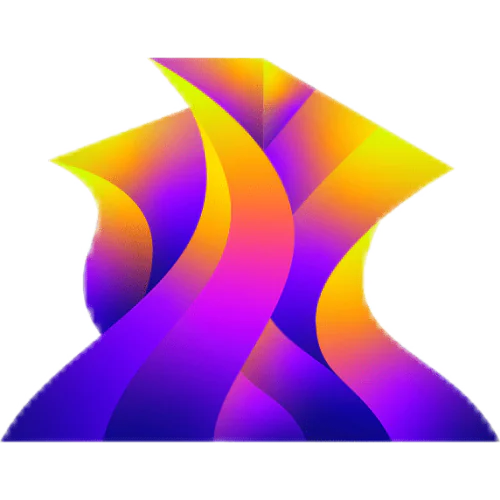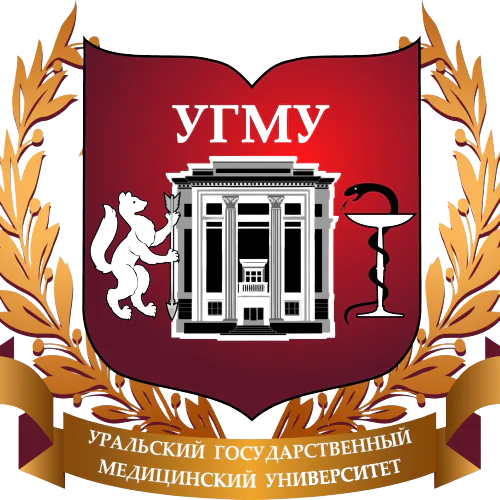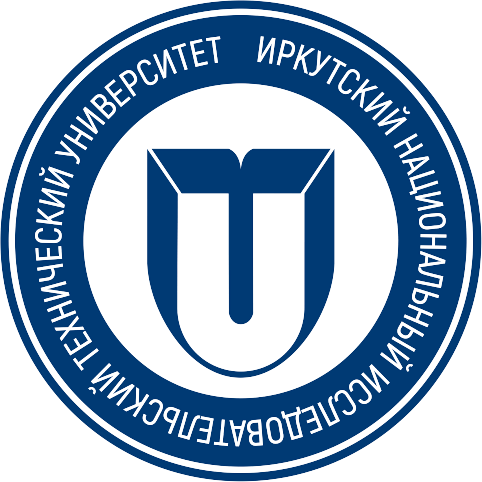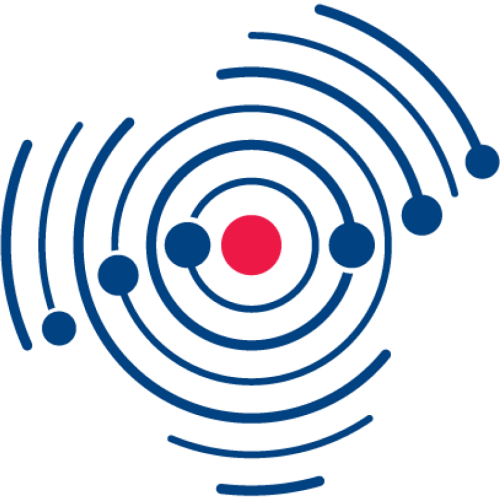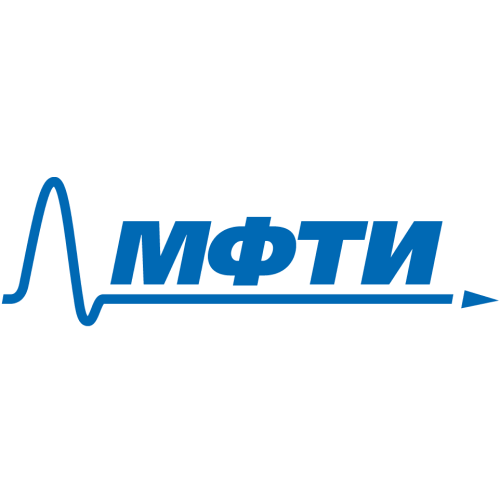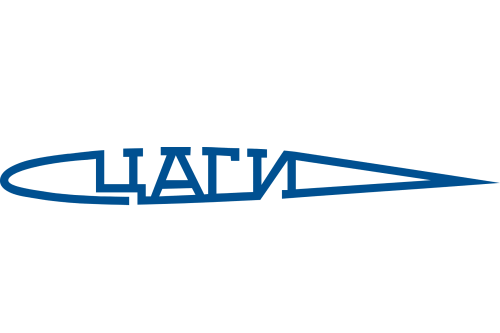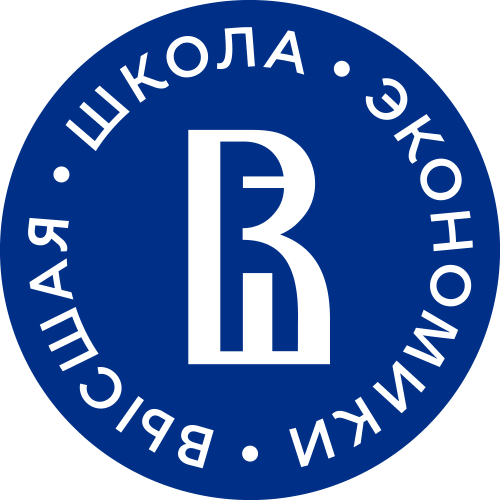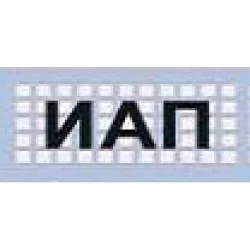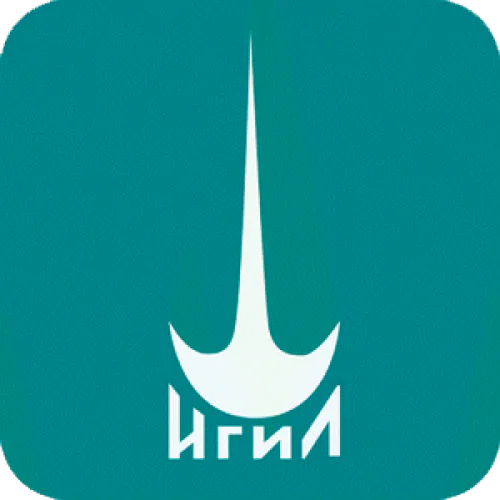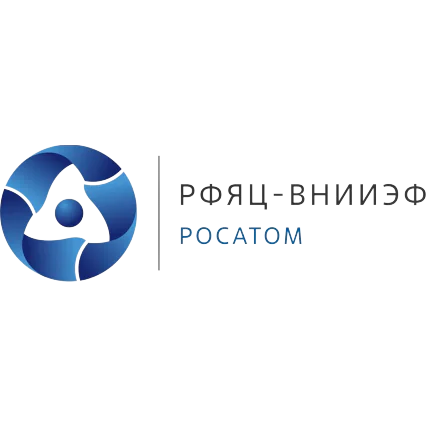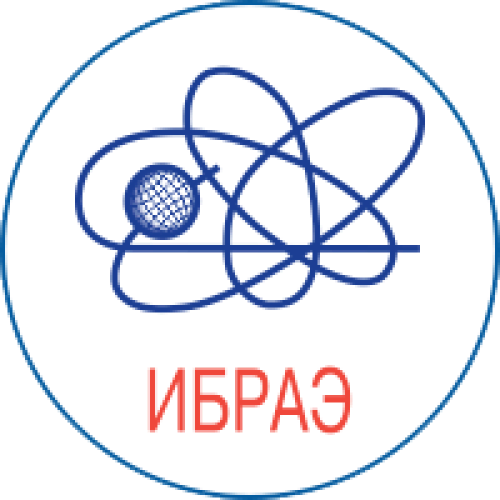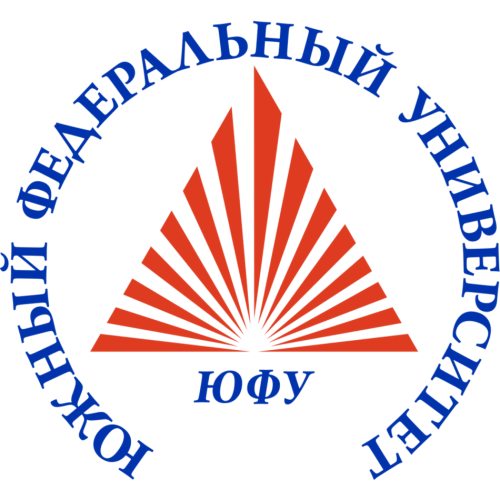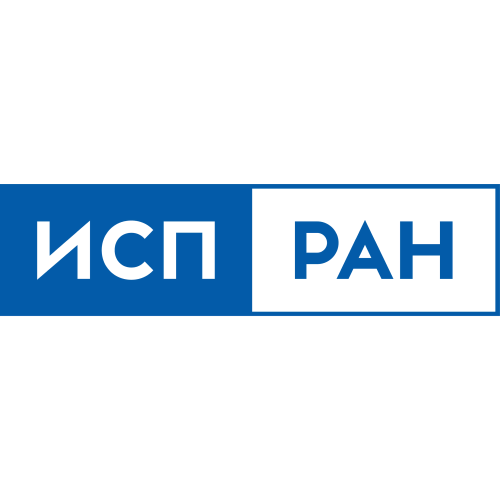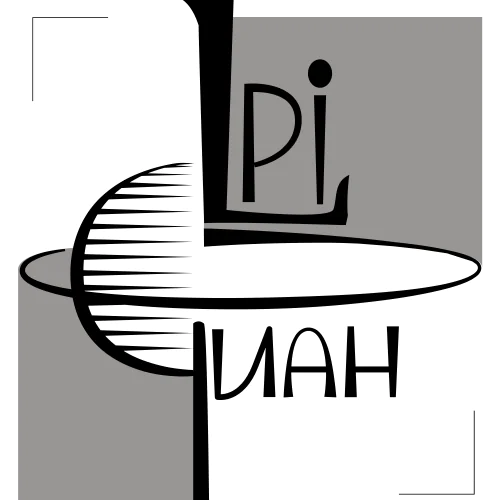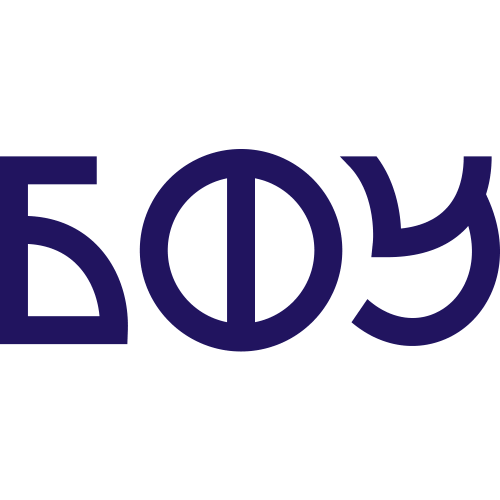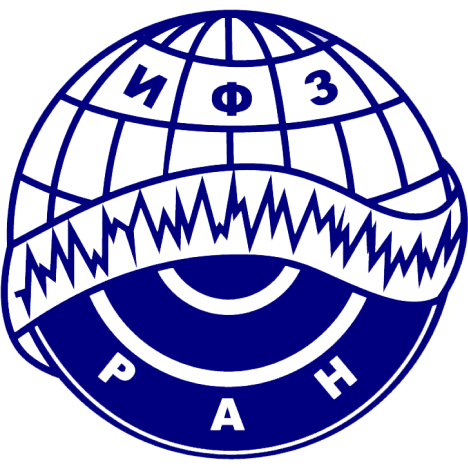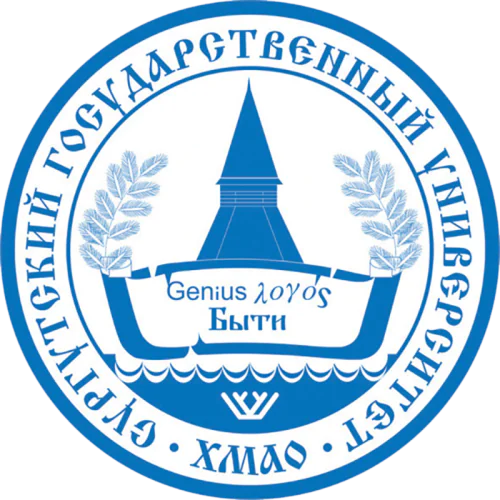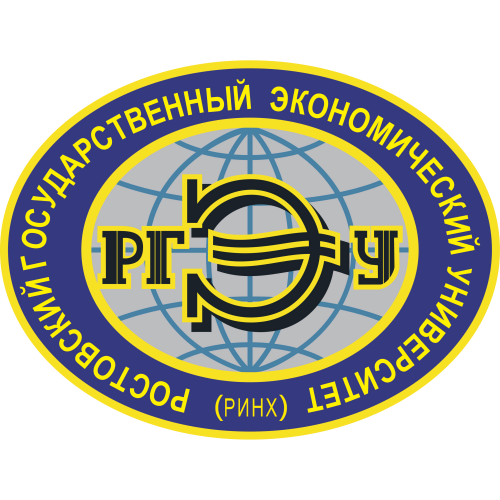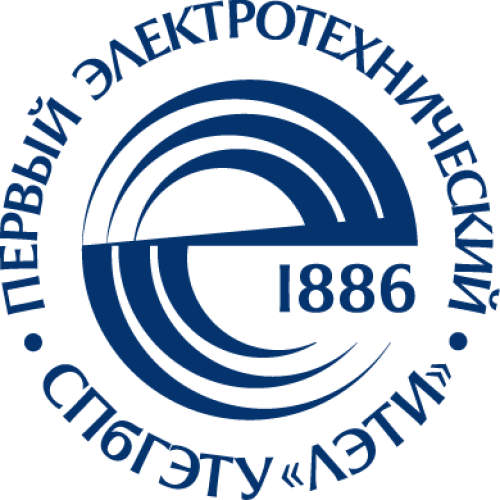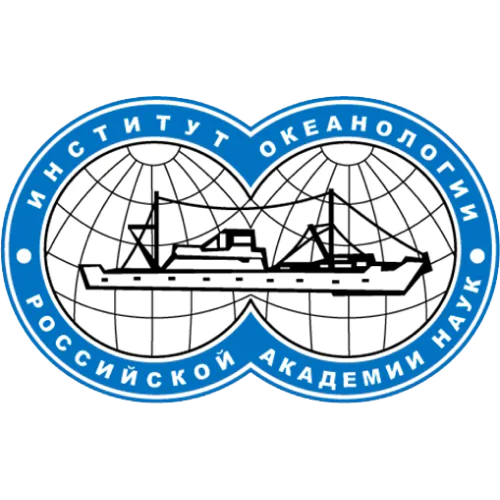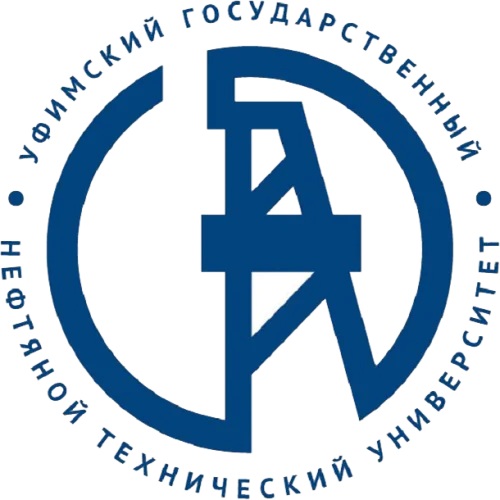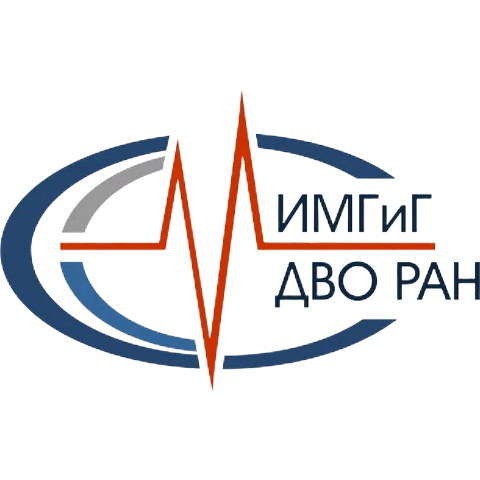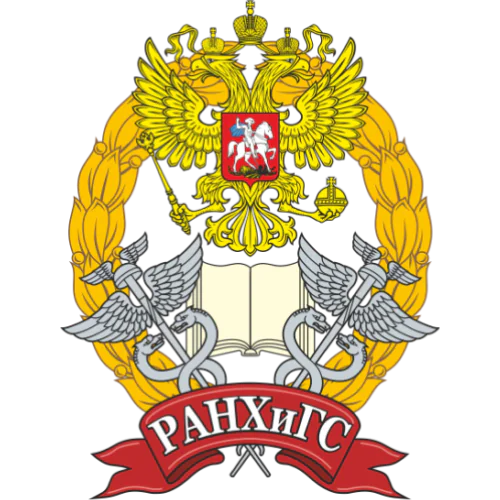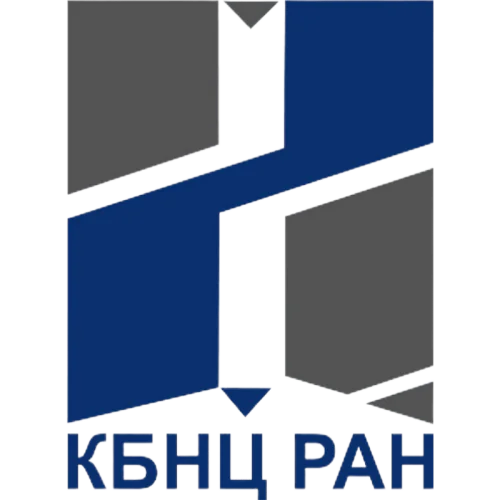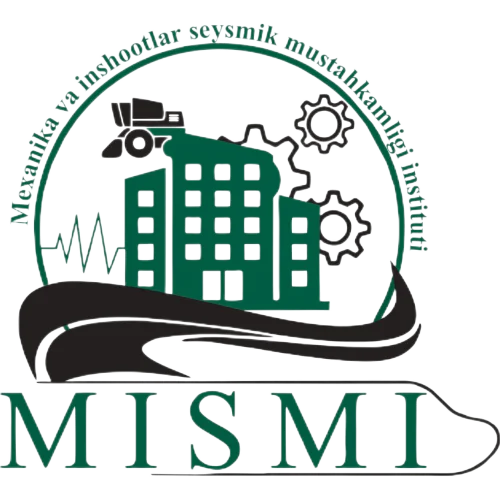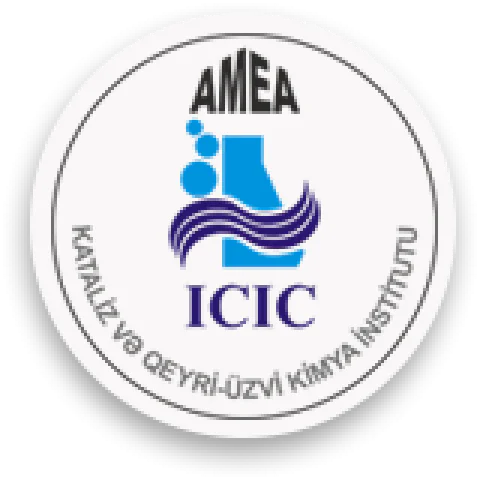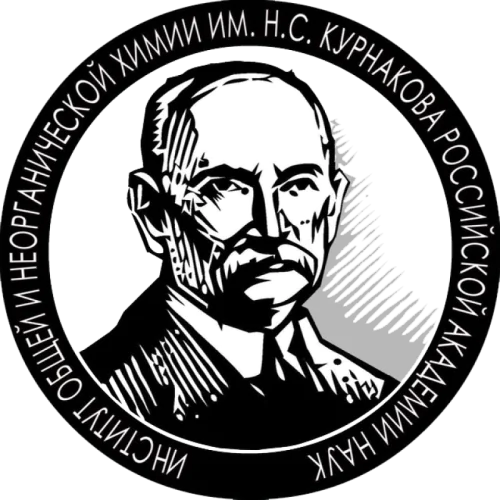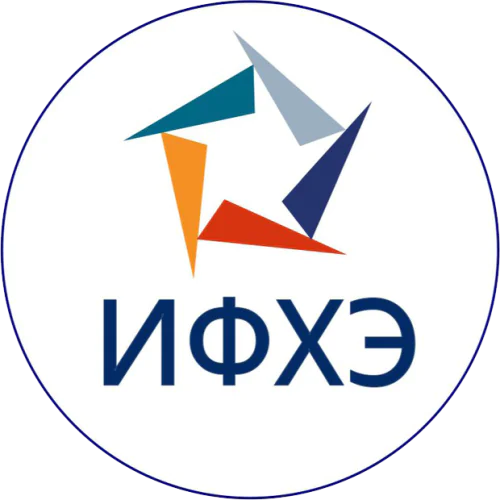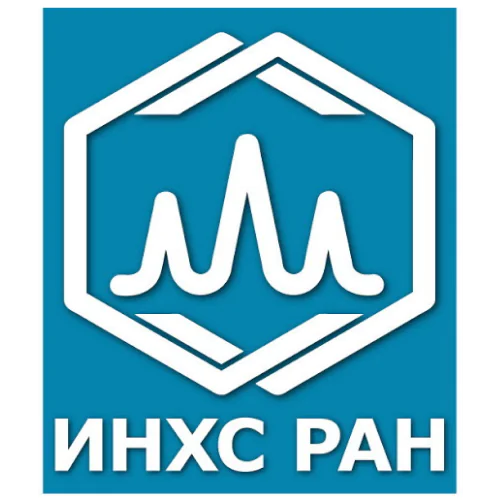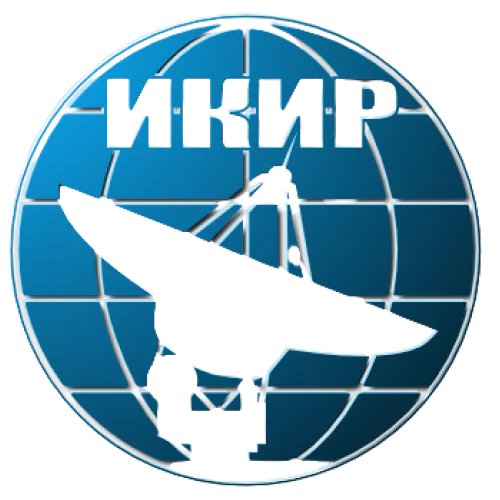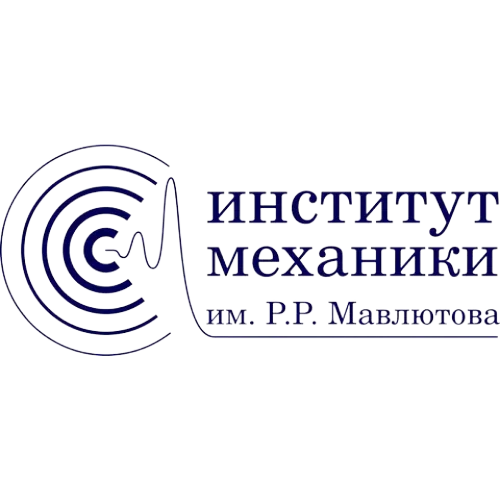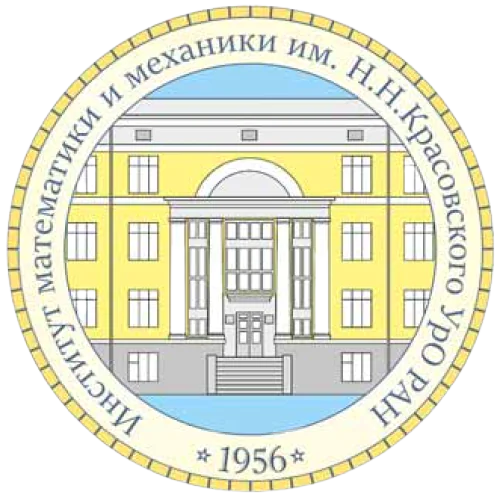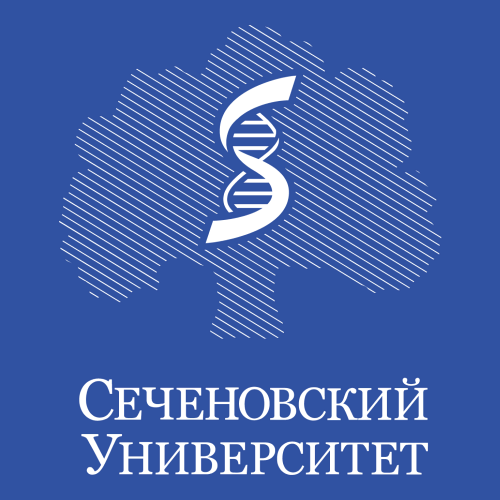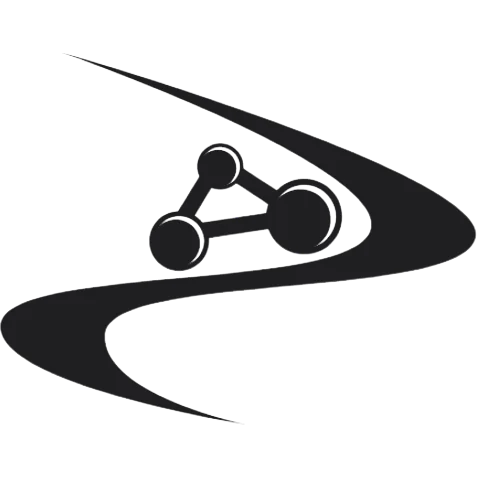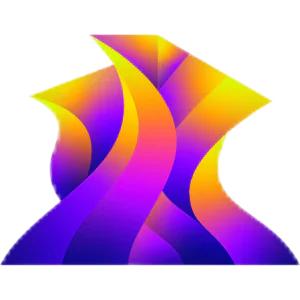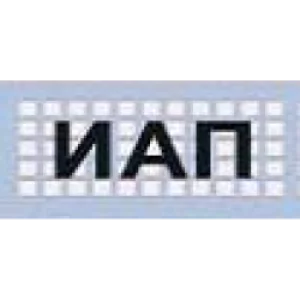Matematicheskoe modelirovanie
Are you a researcher?
Create a profile to get free access to personal recommendations for colleagues and new articles.
Years of issue
2024
journal names
Matematicheskoe modelirovanie
Top-3 citing journals

Matematicheskoe modelirovanie
(140 citations)

Keldysh Institute Preprints
(68 citations)

Журнал вычислительной математики и математической физики
(21 citations)
Top-3 organizations

Keldysh Institute of Applied Mathematics of the Russian Academy of Sciences
(208 publications)

Lomonosov Moscow State University
(63 publications)
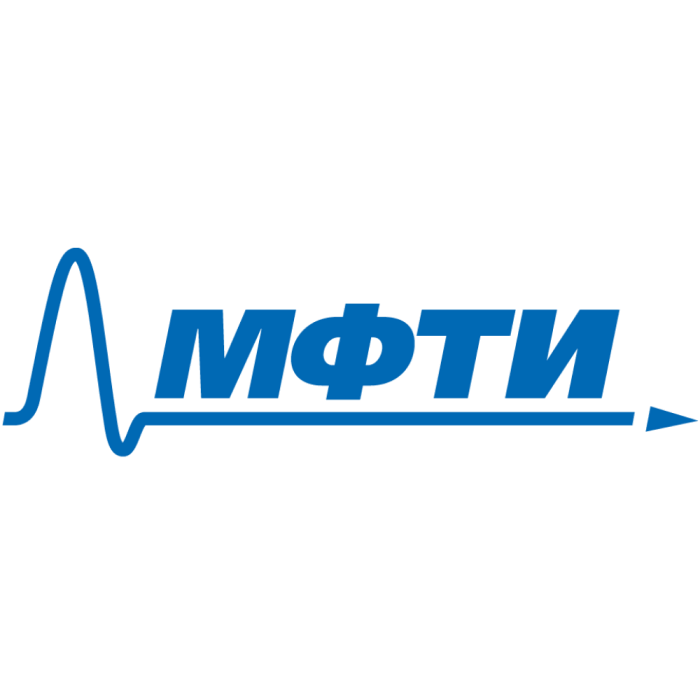
Moscow Institute of Physics and Technology
(42 publications)

Keldysh Institute of Applied Mathematics of the Russian Academy of Sciences
(147 publications)

Lomonosov Moscow State University
(44 publications)

Moscow Institute of Physics and Technology
(20 publications)
Top-3 countries
Most cited in 5 years
Top-100
Citing journals
|
20
40
60
80
100
120
140
|
|
|
Matematicheskoe modelirovanie
140 citations, 35.44%
|
|
|
Keldysh Institute Preprints
68 citations, 17.22%
|
|
|
Журнал вычислительной математики и математической физики
21 citations, 5.32%
|
|
|
Communications in Computer and Information Science
12 citations, 3.04%
|
|
|
Доклады Российской академии наук Математика информатика процессы управления
9 citations, 2.28%
|
|
|
Известия Российской академии наук. Механика жидкости и газа
7 citations, 1.77%
|
|
|
Lobachevskii Journal of Mathematics
6 citations, 1.52%
|
|
|
COMPUTATIONAL MATHEMATICS AND INFORMATION TECHNOLOGIES
6 citations, 1.52%
|
|
|
Lecture Notes in Networks and Systems
5 citations, 1.27%
|
|
|
AIP Conference Proceedings
5 citations, 1.27%
|
|
|
Smart Innovation, Systems and Technologies
4 citations, 1.01%
|
|
|
Computational Mathematics and Mathematical Physics
4 citations, 1.01%
|
|
|
Computational Continuum Mechanics
4 citations, 1.01%
|
|
|
Journal of Physics: Conference Series
3 citations, 0.76%
|
|
|
Fluid Dynamics
3 citations, 0.76%
|
|
|
Advanced Engineering Research
3 citations, 0.76%
|
|
|
Herald of the Russian Academy of Sciences
2 citations, 0.51%
|
|
|
Mathematical Biology and Bioinformatics
2 citations, 0.51%
|
|
|
Russian Meteorology and Hydrology
2 citations, 0.51%
|
|
|
Solnecno-Zemnaa Fizika
2 citations, 0.51%
|
|
|
IOP Conference Series: Materials Science and Engineering
2 citations, 0.51%
|
|
|
Izvestiya. Ferrous Metallurgy
2 citations, 0.51%
|
|
|
Computational Mathematics and Modeling
2 citations, 0.51%
|
|
|
Procedia Computer Science
2 citations, 0.51%
|
|
|
Technical Physics
2 citations, 0.51%
|
|
|
Thermophysics and Aeromechanics
2 citations, 0.51%
|
|
|
SSRN Electronic Journal
2 citations, 0.51%
|
|
|
Informatics and Automation
2 citations, 0.51%
|
|
|
Engineering Journal Science and Innovation
2 citations, 0.51%
|
|
|
Акустический журнал
2 citations, 0.51%
|
|
|
Proceedings of Southwest State University
2 citations, 0.51%
|
|
|
Теоретическая и математическая физика
2 citations, 0.51%
|
|
|
Tyumen State University Herald. Physical and Mathematical Modeling Oil Gas Energy
2 citations, 0.51%
|
|
|
Modelling and Data Analysis
2 citations, 0.51%
|
|
|
Дифференциальные уравнения
2 citations, 0.51%
|
|
|
Measurement Techniques
1 citation, 0.25%
|
|
|
Natural Hazards and Earth System Sciences
1 citation, 0.25%
|
|
|
Journal of Engineering Physics and Thermophysics
1 citation, 0.25%
|
|
|
Russian Physics Journal
1 citation, 0.25%
|
|
|
Plasma Physics and Controlled Fusion
1 citation, 0.25%
|
|
|
Defect and Diffusion Forum
1 citation, 0.25%
|
|
|
Russian Journal of Physical Chemistry A
1 citation, 0.25%
|
|
|
International Journal of Modeling, Simulation, and Scientific Computing
1 citation, 0.25%
|
|
|
Lecture Notes in Civil Engineering
1 citation, 0.25%
|
|
|
Georesursy
1 citation, 0.25%
|
|
|
Mechanics of Solids
1 citation, 0.25%
|
|
|
E3S Web of Conferences
1 citation, 0.25%
|
|
|
Doklady Mathematics
1 citation, 0.25%
|
|
|
Physics of Plasmas
1 citation, 0.25%
|
|
|
Journal of Structural Chemistry
1 citation, 0.25%
|
|
|
Theoretical and Mathematical Physics(Russian Federation)
1 citation, 0.25%
|
|
|
Russian Journal of Numerical Analysis and Mathematical Modelling
1 citation, 0.25%
|
|
|
Herald of the Bauman Moscow State Technical University, Series Natural Sciences
1 citation, 0.25%
|
|
|
Voprosy Ekonomiki
1 citation, 0.25%
|
|
|
Journal of Applied Mechanics and Technical Physics
1 citation, 0.25%
|
|
|
Bulletin of the South Ural State University, Series: Mathematical Modelling, Programming and Computer Software
1 citation, 0.25%
|
|
|
Mathematical Models and Computer Simulations
1 citation, 0.25%
|
|
|
Ocean Engineering
1 citation, 0.25%
|
|
|
Astronomy Letters
1 citation, 0.25%
|
|
|
Журнал прикладной химии
1 citation, 0.25%
|
|
|
Вестник Российской академии наук
1 citation, 0.25%
|
|
|
Журнал физической химии
1 citation, 0.25%
|
|
|
Химия твердого топлива
1 citation, 0.25%
|
|
|
Письма в Журнал экспериментальной и теоретической физики
1 citation, 0.25%
|
|
|
Известия Российской академии наук Механика твердого тела
1 citation, 0.25%
|
|
|
Математические заметки
1 citation, 0.25%
|
|
|
Vestnik of Samara University Natural Science Series
1 citation, 0.25%
|
|
|
Regional Economics Theory and Practice
1 citation, 0.25%
|
|
|
Economics and Mathematical Methods
1 citation, 0.25%
|
|
|
Известия Российской академии наук Серия математическая
1 citation, 0.25%
|
|
|
Zhurnal Srednevolzhskogo Matematicheskogo Obshchestva
1 citation, 0.25%
|
|
|
Parodontologiya
1 citation, 0.25%
|
|
|
Ural Medical Journal
1 citation, 0.25%
|
|
|
Safety of technogenic and natural systems
1 citation, 0.25%
|
|
|
Vestnik Moskovskogo Universiteta Seriya 3 Fizika Astronomiya
1 citation, 0.25%
|
|
|
Journal «Izvestiya vuzov Investitsiyi Stroyitelstvo Nedvizhimost»
1 citation, 0.25%
|
|
|
Proceedings of higher educational establishments Geology and Exploration
1 citation, 0.25%
|
|
|
Urban Construction and Architecture
1 citation, 0.25%
|
|
|
Izvestiya Vysshikh Uchebnykh Zavedenii Matematika
1 citation, 0.25%
|
|
|
Астрономический вестник
1 citation, 0.25%
|
|
|
Известия Российской академии наук Физика атмосферы и океана
1 citation, 0.25%
|
|
|
Доклады Российской академии наук Физика технические науки
1 citation, 0.25%
|
|
|
Космические исследования
1 citation, 0.25%
|
|
|
Proceedings of the National Academy of Sciences of Belarus Physics and Mathematics Series
1 citation, 0.25%
|
|
|
Економіка та суспільство
1 citation, 0.25%
|
|
|
Zhilishchnoe Stroitel stvo
1 citation, 0.25%
|
|
|
Вестник Чувашского государственного педагогического университета им И Я Яковлева Серия Механика предельного состояния
1 citation, 0.25%
|
|
| Show all (57 more) | |
|
20
40
60
80
100
120
140
|
|
Citing publishers
|
50
100
150
200
250
|
|
|
Keldysh Institute of Applied Mathematics
208 citations, 52.66%
|
|
|
The Russian Academy of Sciences
46 citations, 11.65%
|
|
|
Pleiades Publishing
32 citations, 8.1%
|
|
|
Springer Nature
28 citations, 7.09%
|
|
|
FSFEI HE Don State Technical University
10 citations, 2.53%
|
|
|
AIP Publishing
6 citations, 1.52%
|
|
|
IOP Publishing
6 citations, 1.52%
|
|
|
Institute of Continuous Media Mechanics
4 citations, 1.01%
|
|
|
Steklov Mathematical Institute
4 citations, 1.01%
|
|
|
Elsevier
3 citations, 0.76%
|
|
|
Bauman Moscow State Technical University
3 citations, 0.76%
|
|
|
Institute of Mathematical Problems of Biology of RAS (IMPB RAS)
2 citations, 0.51%
|
|
|
Tyumen State University
2 citations, 0.51%
|
|
|
Akademizdatcenter Nauka
2 citations, 0.51%
|
|
|
Social Science Electronic Publishing
2 citations, 0.51%
|
|
|
SPIIRAS
2 citations, 0.51%
|
|
|
Infra-M Academic Publishing House
2 citations, 0.51%
|
|
|
National University of Science & Technology (MISiS)
2 citations, 0.51%
|
|
|
Moscow State University of Psychology and Education
2 citations, 0.51%
|
|
|
Southwest State University
2 citations, 0.51%
|
|
|
Walter de Gruyter
1 citation, 0.25%
|
|
|
World Scientific
1 citation, 0.25%
|
|
|
EDP Sciences
1 citation, 0.25%
|
|
|
Trans Tech Publications
1 citation, 0.25%
|
|
|
Georesursy LLC
1 citation, 0.25%
|
|
|
Copernicus
1 citation, 0.25%
|
|
|
Kazan Federal University
1 citation, 0.25%
|
|
|
Samara State Technical University
1 citation, 0.25%
|
|
|
NP Voprosy Ekonomiki
1 citation, 0.25%
|
|
|
Samara National Research University
1 citation, 0.25%
|
|
|
South Ural State University
1 citation, 0.25%
|
|
|
Publishing House Belorusskaya Nauka
1 citation, 0.25%
|
|
|
Publishing House Finance and Credit
1 citation, 0.25%
|
|
|
Irkutsk National Research Technical University
1 citation, 0.25%
|
|
|
Stroymaterialy
1 citation, 0.25%
|
|
|
Publishing House Helvetica (Publications)
1 citation, 0.25%
|
|
|
National Research Mordovia State University MRSU
1 citation, 0.25%
|
|
|
Periodontal Association - RPA
1 citation, 0.25%
|
|
|
Ural State Medical University
1 citation, 0.25%
|
|
|
Moscow University Press
1 citation, 0.25%
|
|
|
Sergo Ordshonikidze University
1 citation, 0.25%
|
|
|
Yakovlev Chuvash State Pedagogical University
1 citation, 0.25%
|
|
| Show all (12 more) | |
|
50
100
150
200
250
|
|
Publishing organizations
|
50
100
150
200
250
|
|
|
Keldysh Institute of Applied Mathematics of the Russian Academy of Sciences
208 publications, 37.28%
|
|
|
Lomonosov Moscow State University
63 publications, 11.29%
|
|
|
Moscow Institute of Physics and Technology
42 publications, 7.53%
|
|
|
Central Aerohydrodynamic Institute
24 publications, 4.3%
|
|
|
National Research Nuclear University MEPhI
15 publications, 2.69%
|
|
|
Peter the Great St. Petersburg Polytechnic University
12 publications, 2.15%
|
|
|
Federal Research Center Computer Science and Control of the Russian Academy of Sciences
12 publications, 2.15%
|
|
|
National Research University Higher School of Economics
11 publications, 1.97%
|
|
|
Bauman Moscow State Technical University
11 publications, 1.97%
|
|
|
Moscow Aviation Institute (National Research University)
11 publications, 1.97%
|
|
|
Moscow Automobile and Road Construction State Technical University
11 publications, 1.97%
|
|
|
National Research Centre "Kurchatov Institute"
10 publications, 1.79%
|
|
|
Don State Technical University
10 publications, 1.79%
|
|
|
Novosibirsk State University
9 publications, 1.61%
|
|
|
Institute for Computer Aided Design of the Russian Academy of Sciences
8 publications, 1.43%
|
|
|
Lavrentyev Institute of Hydrodynamics of the Siberian Branch of the Russian Academy of Sciences
7 publications, 1.25%
|
|
|
Peoples' Friendship University of Russia
7 publications, 1.25%
|
|
|
All-Russian Research Institute of Experimental Physics
7 publications, 1.25%
|
|
|
Nuclear Safety Institute of the Russian Academy of Sciences
6 publications, 1.08%
|
|
|
Saint Petersburg State University
6 publications, 1.08%
|
|
|
Plekhanov Russian University of Economics
6 publications, 1.08%
|
|
|
Scientific Research Institute for System Analysis of NRC «Kurchatov Institute»
6 publications, 1.08%
|
|
|
Financial University under the Government of the Russian Federation
6 publications, 1.08%
|
|
|
Joint Institute for High Temperatures of the Russian Academy of Sciences
5 publications, 0.9%
|
|
|
Ishlinsky Institute for Problems in Mechanics of the Russian Academy of Sciences
5 publications, 0.9%
|
|
|
Southern Federal University
5 publications, 0.9%
|
|
|
Polar Geophysical Institute
5 publications, 0.9%
|
|
|
Ivannikov Institute for System Programming of the Russian Academy of Sciences
5 publications, 0.9%
|
|
|
State Research Institute of Aviation Systems
5 publications, 0.9%
|
|
|
Ufa University of Science and Technology
5 publications, 0.9%
|
|
|
Institute of Petrochemistry and Catalysis of the Ufa Federal Research Center of the Russian Academy of Sciences
4 publications, 0.72%
|
|
|
P.N. Lebedev Physical Institute of the Russian Academy of Sciences
4 publications, 0.72%
|
|
|
Khristianovich Institute of Theoretical and Applied Mechanics of the Siberian Branch of the Russian Academy of Sciences
4 publications, 0.72%
|
|
|
Immanuel Kant Baltic Federal University
4 publications, 0.72%
|
|
|
Tula State University
4 publications, 0.72%
|
|
|
MIREA — Russian Technological University
4 publications, 0.72%
|
|
|
Moscow Power Engineering Institute
4 publications, 0.72%
|
|
|
Voronezh State University
4 publications, 0.72%
|
|
|
Marchuk Institute of Numerical Mathematics of the Russian Academy of Sciences
4 publications, 0.72%
|
|
|
Mining Institute of the Ural Branch of the Russian Academy of Sciences
4 publications, 0.72%
|
|
|
RFNC Zababakhin All-Russian Research Institute of Technical Physics
4 publications, 0.72%
|
|
|
V. A. Trapeznikov Institute of Control Sciences of the Russian Academy of Sciences
3 publications, 0.54%
|
|
|
Tomsk State University
3 publications, 0.54%
|
|
|
Schmidt Institute of Physics of the Earth of the Russian Academy of Sciences
3 publications, 0.54%
|
|
|
Ogarev Mordovia State University
3 publications, 0.54%
|
|
|
P.G. Demidov Yaroslavl State University
3 publications, 0.54%
|
|
|
Surgut State University
3 publications, 0.54%
|
|
|
Federal Research Center for Information and Computational Technologies
3 publications, 0.54%
|
|
|
Komsomolsk-on-Amur State University
3 publications, 0.54%
|
|
|
Amur State University
3 publications, 0.54%
|
|
|
Rostov State Economic University
3 publications, 0.54%
|
|
|
Boreskov Institute of Catalysis of the Siberian Branch of the Russian Academy of Sciences
2 publications, 0.36%
|
|
|
Institute for Automation and Control Processes of the Far Eastern Branch of the Russian Academy of Sciences
2 publications, 0.36%
|
|
|
Kazan Federal University
2 publications, 0.36%
|
|
|
Far Eastern Federal University
2 publications, 0.36%
|
|
|
Lobachevsky State University of Nizhny Novgorod
2 publications, 0.36%
|
|
|
National Research Tomsk Polytechnic University
2 publications, 0.36%
|
|
|
Saint Petersburg Electrotechnical University "LETI"
2 publications, 0.36%
|
|
|
Saint Petersburg Mining University
2 publications, 0.36%
|
|
|
P. P. Shirshov Institute of Oceanology of the Russian Academy of Sciences
2 publications, 0.36%
|
|
|
Novosibirsk State Technical University
2 publications, 0.36%
|
|
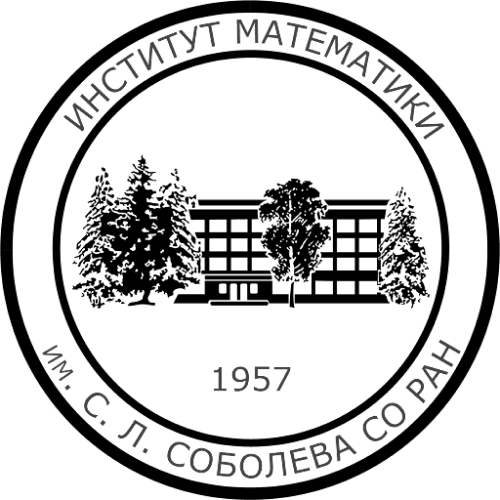
Sobolev Institute of Mathematics of the Siberian Branch of the Russian Academy of Sciences
2 publications, 0.36%
|
|
|
Kazan National Research Technical University named after A. N. Tupolev - KAI
2 publications, 0.36%
|
|
|
Ufa State Petroleum Technological University
2 publications, 0.36%
|
|
|
Voronezh State Technical University
2 publications, 0.36%
|
|
|
Nizhny Novgorod State Technical University n.a. R.E. Alekseev
2 publications, 0.36%
|
|
|
Yaroslavl State Technical University
2 publications, 0.36%
|
|
|
Institute of Marine Geology and Geophysics of the Far Eastern Branch of the Russian Academy of Sciences
2 publications, 0.36%
|
|
|
Russian Presidential Academy of National Economy and Public Administration
2 publications, 0.36%
|
|
|
Kabardino-Balkarian Scientific Center of the Russian Academy of Sciences
2 publications, 0.36%
|
|
|
Institute of Applied Mathematics and Automation KBSC of the Russian Academy of Sciences
2 publications, 0.36%
|
|
|
A. K. Ailamazyan Program Systems Institute of the Russian Academy of Sciences
2 publications, 0.36%
|
|
|
Vladivostok State University
2 publications, 0.36%
|
|
|
Institute of Mechanics and Seismic Resistance of Structures named after M.T. Urazbaev of the Academy of Sciences of the Republic of Uzbekistan
2 publications, 0.36%
|
|
|
Institute of Catalysis and Inorganic Chemistry named after academician Murtuza Naghiyev of the Ministry of Science and Education of the Republic of Azerbaijan
2 publications, 0.36%
|
|
|
Kurnakov Institute of General and Inorganic Chemistry of the Russian Academy of Sciences
1 publication, 0.18%
|
|
|
A.N. Frumkin Institute of Physical Chemistry and Electrochemistry of the Russian Academy of Sciences
1 publication, 0.18%
|
|
|
A.V. Topchiev Institute of Petrochemical Synthesis RAS
1 publication, 0.18%
|
|
|
Vernadsky Institute of Geochemistry and Analytical Chemistry of the Russian Academy of Sciences
1 publication, 0.18%
|
|
|
N.N. Semenov Federal Research Center for Chemical Physics of the Russian Academy of Sciences
1 publication, 0.18%
|
|
|
Pushkov Institute of Terrestrial Magnetism, Ionosphere and Radiowave Propagation of Russian Academy of Sciences
1 publication, 0.18%
|
|
|
Institute of Cosmophysical Research and Radio Wave Propagation of the Far Eastern Branch of the Russian Academy of Sciences
1 publication, 0.18%
|
|
|
Mechanical Engineering Research Institute of Russian Academy of Sciences
1 publication, 0.18%
|
|
|
Institute of Applied Mechanics of the Russian Academy of Sciences
1 publication, 0.18%
|
|
|
Mavlyutov Institute of Mechanics of the Ufa Federal Research Center of the Russian Academy of Sciences
1 publication, 0.18%
|
|
|
N.N. Krasovskii Institute of Mathematics and Mechanics of the Ural Branch of the Russian Academy of Sciences
1 publication, 0.18%
|
|
|
Institute of Continuous Media Mechanics of the Ural Branch of the Russian Academy of Sciences
1 publication, 0.18%
|
|
|
Ural Federal University
1 publication, 0.18%
|
|
|
Samara National Research University
1 publication, 0.18%
|
|
|
Sechenov First Moscow State Medical University
1 publication, 0.18%
|
|
|
Siberian Federal University
1 publication, 0.18%
|
|
|
University of Tyumen
1 publication, 0.18%
|
|
|
Kazan National Research Technological University
1 publication, 0.18%
|
|
|
Joint Institute for Nuclear Research
1 publication, 0.18%
|
|
|
Alikhanov Institute for Theoretical and Experimental Physics of NRC «Kurchatov Institute»
1 publication, 0.18%
|
|
|
Mendeleev University of Chemical Technology of Russia
1 publication, 0.18%
|
|
|
Steklov Mathematical Institute of Russian Academy of Sciences
1 publication, 0.18%
|
|
|
Belgorod State Technological University named after V.G. Shoukhov
1 publication, 0.18%
|
|
|
Irkutsk State University
1 publication, 0.18%
|
|
|
Dukhov Research Institute of Automatics
1 publication, 0.18%
|
|
| Show all (70 more) | |
|
50
100
150
200
250
|
|
Publishing organizations in 5 years
|
20
40
60
80
100
120
140
160
|
|
|
Keldysh Institute of Applied Mathematics of the Russian Academy of Sciences
147 publications, 35.94%
|
|
|
Lomonosov Moscow State University
44 publications, 10.76%
|
|
|
Moscow Institute of Physics and Technology
20 publications, 4.89%
|
|
|
Central Aerohydrodynamic Institute
19 publications, 4.65%
|
|
|
Moscow Aviation Institute (National Research University)
10 publications, 2.44%
|
|
|
Peter the Great St. Petersburg Polytechnic University
10 publications, 2.44%
|
|
|
National Research University Higher School of Economics
8 publications, 1.96%
|
|
|
National Research Centre "Kurchatov Institute"
8 publications, 1.96%
|
|
|
Federal Research Center Computer Science and Control of the Russian Academy of Sciences
8 publications, 1.96%
|
|
|
National Research Nuclear University MEPhI
7 publications, 1.71%
|
|
|
Bauman Moscow State Technical University
7 publications, 1.71%
|
|
|
Lavrentyev Institute of Hydrodynamics of the Siberian Branch of the Russian Academy of Sciences
7 publications, 1.71%
|
|
|
Don State Technical University
6 publications, 1.47%
|
|
|
Financial University under the Government of the Russian Federation
6 publications, 1.47%
|
|
|
Moscow Automobile and Road Construction State Technical University
6 publications, 1.47%
|
|
|
Nuclear Safety Institute of the Russian Academy of Sciences
5 publications, 1.22%
|
|
|
Novosibirsk State University
5 publications, 1.22%
|
|
|
Saint Petersburg State University
5 publications, 1.22%
|
|
|
All-Russian Research Institute of Experimental Physics
5 publications, 1.22%
|
|
|
Institute of Petrochemistry and Catalysis of the Ufa Federal Research Center of the Russian Academy of Sciences
4 publications, 0.98%
|
|
|
P.N. Lebedev Physical Institute of the Russian Academy of Sciences
4 publications, 0.98%
|
|
|
Joint Institute for High Temperatures of the Russian Academy of Sciences
4 publications, 0.98%
|
|
|
Ishlinsky Institute for Problems in Mechanics of the Russian Academy of Sciences
4 publications, 0.98%
|
|
|
Immanuel Kant Baltic Federal University
4 publications, 0.98%
|
|
|
Peoples' Friendship University of Russia
4 publications, 0.98%
|
|
|
MIREA — Russian Technological University
4 publications, 0.98%
|
|
|
Moscow Power Engineering Institute
4 publications, 0.98%
|
|
|
Polar Geophysical Institute
4 publications, 0.98%
|
|
|
Scientific Research Institute for System Analysis of NRC «Kurchatov Institute»
4 publications, 0.98%
|
|
|
RFNC Zababakhin All-Russian Research Institute of Technical Physics
4 publications, 0.98%
|
|
|
Institute for Computer Aided Design of the Russian Academy of Sciences
4 publications, 0.98%
|
|
|
Southern Federal University
3 publications, 0.73%
|
|
|
Tula State University
3 publications, 0.73%
|
|
|
Plekhanov Russian University of Economics
3 publications, 0.73%
|
|
|
Schmidt Institute of Physics of the Earth of the Russian Academy of Sciences
3 publications, 0.73%
|
|
|
Ogarev Mordovia State University
3 publications, 0.73%
|
|
|
Ivannikov Institute for System Programming of the Russian Academy of Sciences
3 publications, 0.73%
|
|
|
Marchuk Institute of Numerical Mathematics of the Russian Academy of Sciences
3 publications, 0.73%
|
|
|
Mining Institute of the Ural Branch of the Russian Academy of Sciences
3 publications, 0.73%
|
|
|
Komsomolsk-on-Amur State University
3 publications, 0.73%
|
|
|
State Research Institute of Aviation Systems
3 publications, 0.73%
|
|
|
Ufa University of Science and Technology
3 publications, 0.73%
|
|
|
Boreskov Institute of Catalysis of the Siberian Branch of the Russian Academy of Sciences
2 publications, 0.49%
|
|
|
Kazan Federal University
2 publications, 0.49%
|
|
|
Lobachevsky State University of Nizhny Novgorod
2 publications, 0.49%
|
|
|
Tomsk State University
2 publications, 0.49%
|
|
|
Saint Petersburg Mining University
2 publications, 0.49%
|
|
|
P. P. Shirshov Institute of Oceanology of the Russian Academy of Sciences
2 publications, 0.49%
|
|

Sobolev Institute of Mathematics of the Siberian Branch of the Russian Academy of Sciences
2 publications, 0.49%
|
|
|
Voronezh State University
2 publications, 0.49%
|
|
|
Kazan National Research Technical University named after A. N. Tupolev - KAI
2 publications, 0.49%
|
|
|
P.G. Demidov Yaroslavl State University
2 publications, 0.49%
|
|
|
Surgut State University
2 publications, 0.49%
|
|
|
Yaroslavl State Technical University
2 publications, 0.49%
|
|
|
Russian Presidential Academy of National Economy and Public Administration
2 publications, 0.49%
|
|
|
Kabardino-Balkarian Scientific Center of the Russian Academy of Sciences
2 publications, 0.49%
|
|
|
Institute of Applied Mathematics and Automation KBSC of the Russian Academy of Sciences
2 publications, 0.49%
|
|
|
A. K. Ailamazyan Program Systems Institute of the Russian Academy of Sciences
2 publications, 0.49%
|
|
|
Amur State University
2 publications, 0.49%
|
|
|
Institute of Mechanics and Seismic Resistance of Structures named after M.T. Urazbaev of the Academy of Sciences of the Republic of Uzbekistan
2 publications, 0.49%
|
|
|
Institute of Catalysis and Inorganic Chemistry named after academician Murtuza Naghiyev of the Ministry of Science and Education of the Republic of Azerbaijan
2 publications, 0.49%
|
|
|
Kurnakov Institute of General and Inorganic Chemistry of the Russian Academy of Sciences
1 publication, 0.24%
|
|
|
A.N. Frumkin Institute of Physical Chemistry and Electrochemistry of the Russian Academy of Sciences
1 publication, 0.24%
|
|
|
A.V. Topchiev Institute of Petrochemical Synthesis RAS
1 publication, 0.24%
|
|
|
Vernadsky Institute of Geochemistry and Analytical Chemistry of the Russian Academy of Sciences
1 publication, 0.24%
|
|
|
N.N. Semenov Federal Research Center for Chemical Physics of the Russian Academy of Sciences
1 publication, 0.24%
|
|
|
Pushkov Institute of Terrestrial Magnetism, Ionosphere and Radiowave Propagation of Russian Academy of Sciences
1 publication, 0.24%
|
|
|
Institute for Automation and Control Processes of the Far Eastern Branch of the Russian Academy of Sciences
1 publication, 0.24%
|
|
|
Institute of Cosmophysical Research and Radio Wave Propagation of the Far Eastern Branch of the Russian Academy of Sciences
1 publication, 0.24%
|
|
|
Institute of Applied Mechanics of the Russian Academy of Sciences
1 publication, 0.24%
|
|
|
V. A. Trapeznikov Institute of Control Sciences of the Russian Academy of Sciences
1 publication, 0.24%
|
|
|
Ural Federal University
1 publication, 0.24%
|
|
|
Far Eastern Federal University
1 publication, 0.24%
|
|
|
Samara National Research University
1 publication, 0.24%
|
|
|
National Research Tomsk Polytechnic University
1 publication, 0.24%
|
|
|
Siberian Federal University
1 publication, 0.24%
|
|
|
University of Tyumen
1 publication, 0.24%
|
|
|
Saint Petersburg Electrotechnical University "LETI"
1 publication, 0.24%
|
|
|
Kazan National Research Technological University
1 publication, 0.24%
|
|
|
Joint Institute for Nuclear Research
1 publication, 0.24%
|
|
|
Novosibirsk State Technical University
1 publication, 0.24%
|
|
|
Alikhanov Institute for Theoretical and Experimental Physics of NRC «Kurchatov Institute»
1 publication, 0.24%
|
|
|
Mendeleev University of Chemical Technology of Russia
1 publication, 0.24%
|
|
|
Ufa State Petroleum Technological University
1 publication, 0.24%
|
|
|
Steklov Mathematical Institute of Russian Academy of Sciences
1 publication, 0.24%
|
|
|
Voronezh State Technical University
1 publication, 0.24%
|
|
|
Nizhny Novgorod State Technical University n.a. R.E. Alekseev
1 publication, 0.24%
|
|
|
Irkutsk State University
1 publication, 0.24%
|
|
|
Dukhov Research Institute of Automatics
1 publication, 0.24%
|
|
|
Northern (Arctic) Federal University
1 publication, 0.24%
|
|
|
Innopolis University
1 publication, 0.24%
|
|
|
Moscow Technical University of Communication and Informatics
1 publication, 0.24%
|
|
|
Institute of Mathematics of the National Academy of Sciences of Belarus
1 publication, 0.24%
|
|
|
M. Auezov South Kazakhstan University
1 publication, 0.24%
|
|
|
Saint-Petersburg State Chemical and Pharmaceutical University
1 publication, 0.24%
|
|
|
Federal Research Center of Problem of Chemical Physics and Medicinal Chemistry RAS
1 publication, 0.24%
|
|
|
Mari State University
1 publication, 0.24%
|
|
|
Federal Research Center for Information and Computational Technologies
1 publication, 0.24%
|
|
|
Central Economics and Mathematics Institute of the Russian Academy of Sciences
1 publication, 0.24%
|
|
|
Institute of Applied Mathematical Research of the Karelian Research Centre of the Russian Academy of Sciences
1 publication, 0.24%
|
|
| Show all (70 more) | |
|
20
40
60
80
100
120
140
160
|
|
Publishing countries
|
50
100
150
200
250
300
350
400
450
500
|
|
|
Russia
|
Russia, 493, 88.35%
Russia
493 publications, 88.35%
|
|
Kazakhstan
|
Kazakhstan, 4, 0.72%
Kazakhstan
4 publications, 0.72%
|
|
China
|
China, 3, 0.54%
China
3 publications, 0.54%
|
|
Azerbaijan
|
Azerbaijan, 3, 0.54%
Azerbaijan
3 publications, 0.54%
|
|
Italy
|
Italy, 3, 0.54%
Italy
3 publications, 0.54%
|
|
USA
|
USA, 2, 0.36%
USA
2 publications, 0.36%
|
|
United Kingdom
|
United Kingdom, 2, 0.36%
United Kingdom
2 publications, 0.36%
|
|
Uzbekistan
|
Uzbekistan, 2, 0.36%
Uzbekistan
2 publications, 0.36%
|
|
Belarus
|
Belarus, 1, 0.18%
Belarus
1 publication, 0.18%
|
|
Portugal
|
Portugal, 1, 0.18%
Portugal
1 publication, 0.18%
|
|
Brazil
|
Brazil, 1, 0.18%
Brazil
1 publication, 0.18%
|
|
Poland
|
Poland, 1, 0.18%
Poland
1 publication, 0.18%
|
|
Turkey
|
Turkey, 1, 0.18%
Turkey
1 publication, 0.18%
|
|
Switzerland
|
Switzerland, 1, 0.18%
Switzerland
1 publication, 0.18%
|
|
50
100
150
200
250
300
350
400
450
500
|
Publishing countries in 5 years
|
50
100
150
200
250
300
350
400
|
|
|
Russia
|
Russia, 357, 87.29%
Russia
357 publications, 87.29%
|
|
China
|
China, 3, 0.73%
China
3 publications, 0.73%
|
|
Italy
|
Italy, 3, 0.73%
Italy
3 publications, 0.73%
|
|
Kazakhstan
|
Kazakhstan, 2, 0.49%
Kazakhstan
2 publications, 0.49%
|
|
Azerbaijan
|
Azerbaijan, 2, 0.49%
Azerbaijan
2 publications, 0.49%
|
|
Uzbekistan
|
Uzbekistan, 2, 0.49%
Uzbekistan
2 publications, 0.49%
|
|
Belarus
|
Belarus, 1, 0.24%
Belarus
1 publication, 0.24%
|
|
USA
|
USA, 1, 0.24%
USA
1 publication, 0.24%
|
|
Portugal
|
Portugal, 1, 0.24%
Portugal
1 publication, 0.24%
|
|
United Kingdom
|
United Kingdom, 1, 0.24%
United Kingdom
1 publication, 0.24%
|
|
Poland
|
Poland, 1, 0.24%
Poland
1 publication, 0.24%
|
|
Turkey
|
Turkey, 1, 0.24%
Turkey
1 publication, 0.24%
|
|
Switzerland
|
Switzerland, 1, 0.24%
Switzerland
1 publication, 0.24%
|
|
50
100
150
200
250
300
350
400
|
1 profile journal article

Mozokhina Anastasiia

Peoples' Friendship University of Russia
17 publications,
88 citations
h-index: 5
1 profile journal article

Urvachev Egor

Dukhov Research Institute of Automatics
15 publications,
42 citations
h-index: 4




























